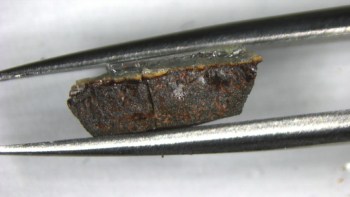
Physicists in the US have for the first time trapped ultracold atoms of dysprosium, the most magnetic element in the periodic table. The breakthrough could open the door to a greater understanding of superfluidity, highly sensitive probes of magnetic fields, and new ways to read and encode quantum information.
Researchers would like to trap as many of the periodic table’s elements as possible, because the unique properties of each allow for different simulations of condensed-matter systems. The typical method involves a magneto-optical trap (MOT), in which a laser causes atoms to temporarily absorb photons and jump into an excited state. These photons give the atoms a push that, combined with the right magnetic field, is directed towards the centre of the group and keeps the atoms cooled and trapped.
Yet some elements have proved easier to trap with MOTs than others. Dysprosium has long been considered to be a difficult candidate because it has so many metastable states close to its ground state. Every time an atom falls into one of these, it would need a separate laser of the correct wavelength to return it to the ground state where the original laser functions. Dysprosium has more than a hundred metastable states, which, researchers assumed, would mean more than a hundred different lasers.
Success with erbium
However, recent research has shown that metastable states do not preclude trapping altogether. In 2006 physicists Jabez McClelland and James Hanssen at the National Institute of Standards and Technology in the US discovered that they could use an MOT to trap erbium – another element with numerous metastable states. It worked because the magnetic field strongly coupled to the magnetic moments of the atoms, thereby keeping them trapped long enough for them to fall back into their ground state of their own accord.
No-one could have predicted before we did the experiment that this would work Benjamin Lev, University of Illinois
It is this work of McClelland and Hanssen that inspired Benjamin Lev and colleagues at the University of Illinois at Urbana-Champaign to try an MOT with dysprosium. “No-one could have predicted before we did the experiment that this would work – and work so well,” says Lev. “Theories of dysprosium structure – and data on its structure, like metastable lifetime – were just too poor to provide a predictor.”
In the Illinois group’s system, dysprosium is first heated to 1250 °C so that it expands through a pinhole, creating an atomic beam. Four lasers then slow the beam down until it is at near rest and glides into a high-vacuum chamber. Finally the application of six laser beams and a magnetic field forms the MOT and cools the atoms – of which there are almost a billion – to between 10 and 1000 microKelvin.
‘A clear breakthrough’
Peter van der Straten of Utrecht University in the Netherlands calls the system “a clear breakthrough in the world of laser cooling and trapping”. However, he is unsure of the additional benefits of dysprosium over erbium or chromium, which also have strong magnetic moments and which are therefore attractive for simulations of superfluid states. Indeed, chromium has even been cooled into a Bose–Einstein condensate (BEC), which is a prerequisite for such simulations. “It is to be expected that [Lev’s group] will try to go that way quickly, and, because they have a large number of atoms, they are very likely to succeed,” he adds. “However, the story of chromium has shown that the path to BEC is not simple due to the strong interactions, and that many hurdles have to be taken before victory is achieved.”
Still, Lev is not deterred. As well as creating a dysprosium BEC, his group is planning to use the system as a quantum-information processor, as a microscope for imaging magnetic materials with high resolution and sensitivity.
The work is described in Phys. Rev. Lett. 104 063001.



